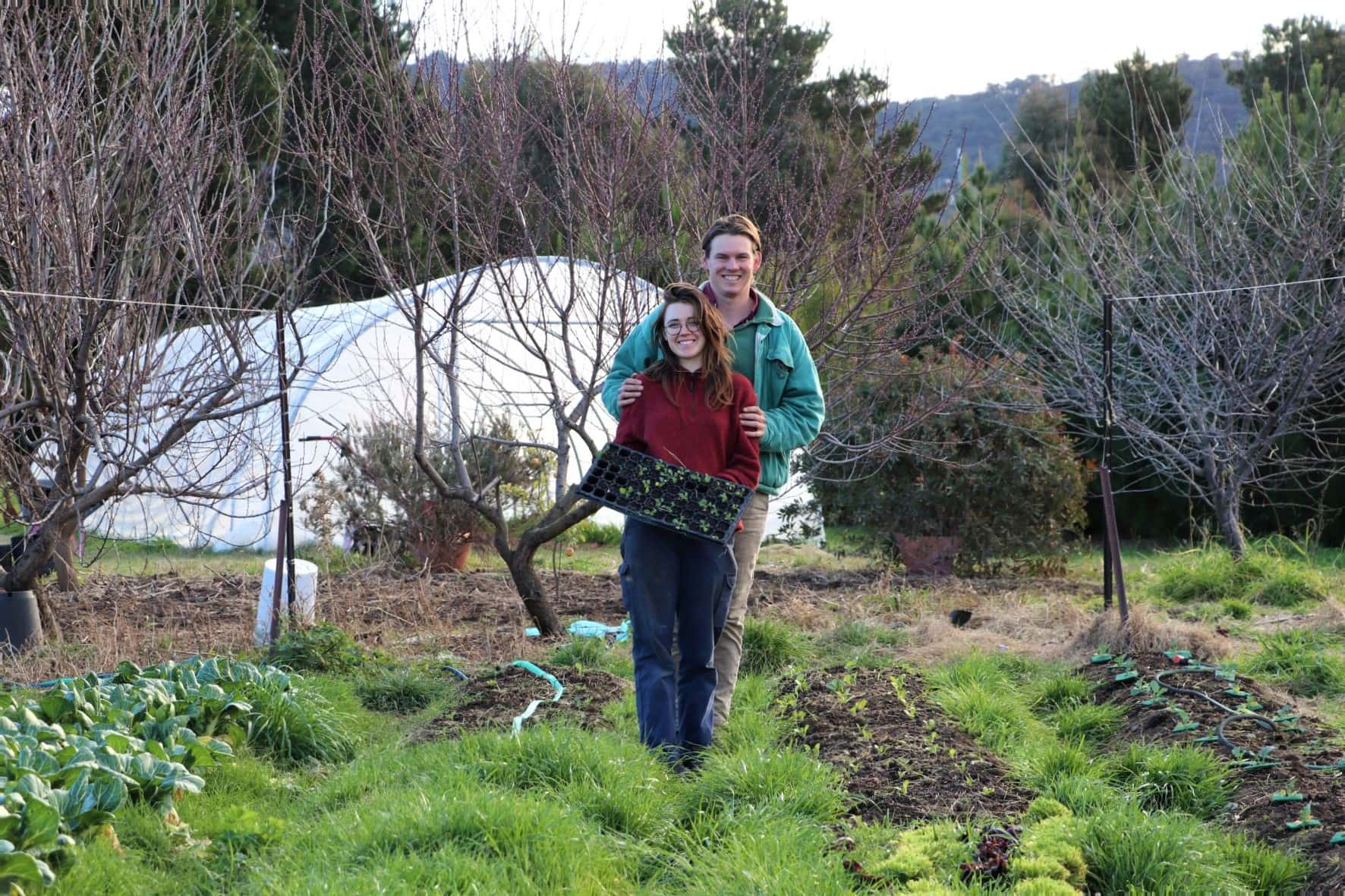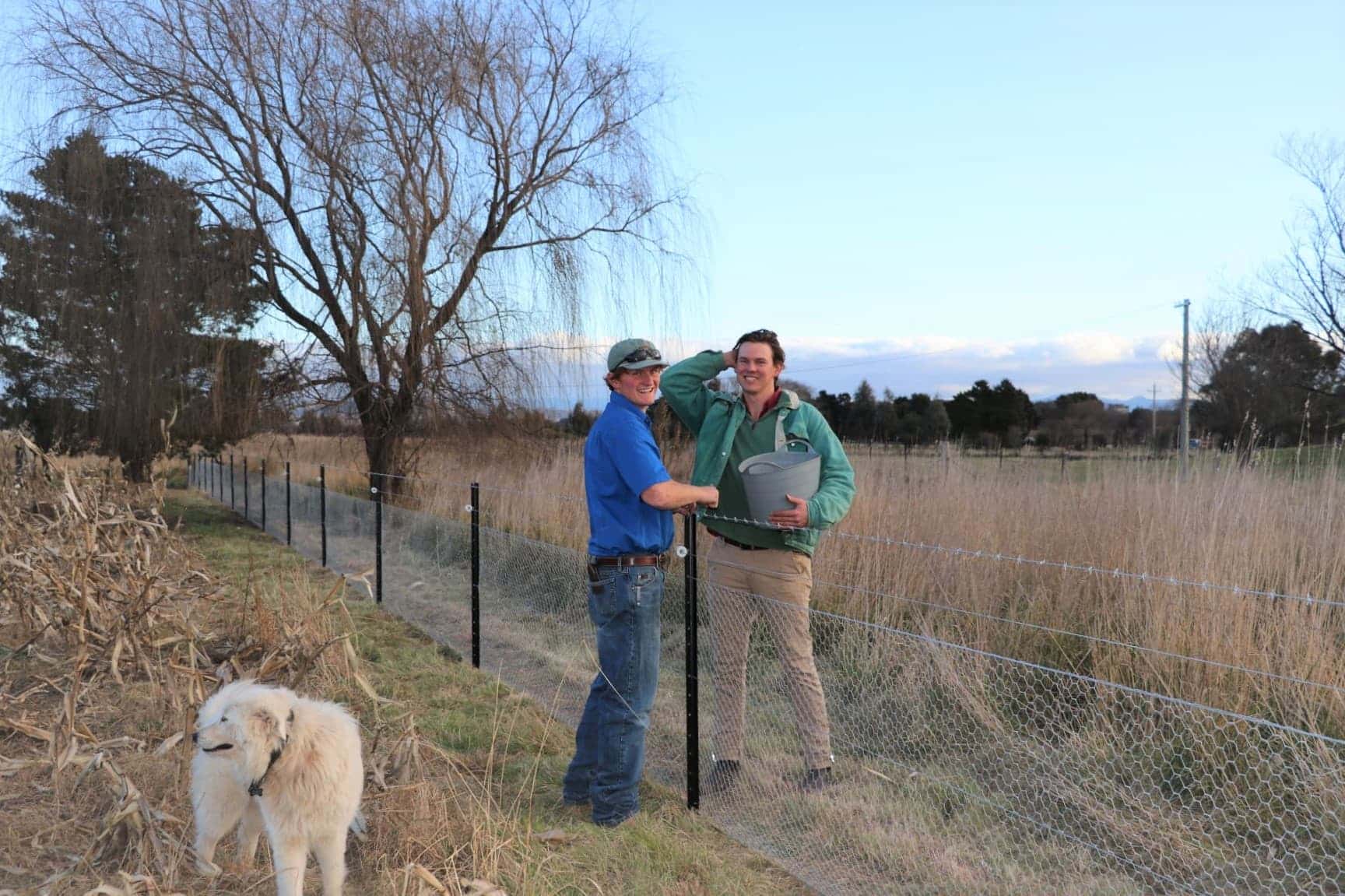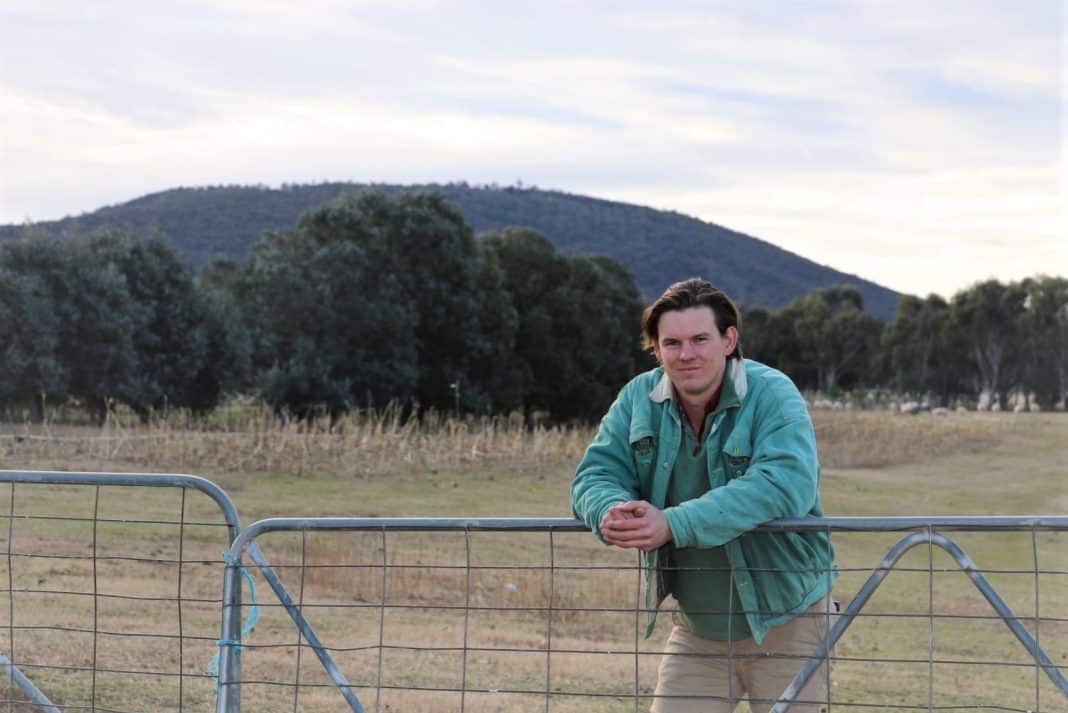In a display of classic country hospitality, there’s an immediate offer of a cup of tea when visiting the heavenly Majura Valley Farm.
It’s hard to believe you’re only 16 minutes from the CBD while surrounded by all the chickens, sheep, lambs, horses, and most importantly, Piggy – the three-legged dog.
Farmer Fred McGrath Weber is just 29 years old, although he says he feels older than his age. His family have owned the Majura Valley Farm since 1999, but he says the history of the property goes back much further than any other block of settled land in Canberra.
Nestled on the picturesque farmland is Majura House, which was originally part of the Duntroon Homestead, built in the 1840s. Farming on Majura Valley Farm pre-dates the foundation of Canberra and is the oldest continuing working farm in the ACT, while Majura House is the oldest inhabited house in the Territory.
Fred led us through the house, showing us the original fireplaces and walls, through to the charming extension, with a wall of windows spilling golden light into the homestead-style kitchen.

“It’s sometimes a little bit like Snow White in this house, where you’ve got lots of animals inside,” he smiles.
“There’s little wrens and things inside the bathroom, which is entertaining sometimes, but other times – like sitting on a blue tongue lizard in the lounge room – it can be not so.
“But I don’t think I’d trade it for anything.”
Majura Valley Farm sits on 50 hectares of rolling Ngunnawal country, connecting up to Mount Ainslie.
The McGrath family chose to give 10 per cent of the land back to help increase biodiversity in the area through sustainable practices, including fencing off creek lines and improving tree lines.
Majura Valley is a farm undergoing change, focusing on holistic and regenerative farming while transitioning from more conventional methods.
It’s an idea that Fred is visibly energetic about, and he believes a lot of Canberra farmers are on the same wavelength as him.
“I think there’s always people who have different opinions on what they think is the best approach. Often what’s taught at universities or through government assisted programs might actually not be the best approach or it might be outdated,” he says.
“For us, we are a bit more adventurous and more left field. We are doing a lot more holistic management practices and focus more on regeneration, but we do still use chemicals to control weeds.
“I think there’s a lot more potential for holistic management, and once you trial it … you find that it is actually more beneficial for not only the land but your money in your pocket. Then a lot more people are probably going to adopt more holistic management practices.”
So, why is the new wave of farming so important to Fred? Well, he’s invested in the future of Canberra agriculture and wants locals to have a better connection and understanding of how their food got on their plate.
“There’s a couple of reasons why it’s important to me. In our location, where we are close to the city in the Majura Valley, we have the firm belief that this type of area could be a food bowl for the city,” Fred says.
“It’s got some of the best soil in the region and with the proximity to the city, it’s got unparalleled agricultural potential and agritourism potential. There’s already lots of businesses operating in that way and more can be encouraged.
“For me, I just really am invested in ensuring that the agriculture sector in Canberra does really thrive, because it just places a higher value on people’s food and consumption. Therefore, the ACT Government will maybe consider developing in a different light, where it’s just not looking at farmland as a land bank for urban sprawl or industrial potential, but has the potential for environment and feeding the city.”

One way the family farm is encouraging Canberrans to connect with the land is through their annual sunflower patch that brings tangible joy and a lot of splendour to all who are lucky to witness its beauty.
“Over the years, we’ve always planted sunflowers on quite a small scale just by the road, and usually just sell them to florists or people come and pick them,” Fred says.
“In March through to April, we created a sunflower maze in our front paddock, and it was so popular. We had thousands of people come, and there was a big diversity of people as well.”
From families to photoshoots and everything in between, locals from all around Canberra gathered for picnics, pet photography, and even to propose amongst the flowers.
“That was a lot of fun and we’re keen to do more of that,” Fred smiles.
“Really, the whole driving force is just connecting people to the farmer and the land. That is a great way for people to put a higher value on their food and where it comes from.”
Canberra Daily would love to hear from you about a story idea in the Canberra and surrounding region. Click here to submit a news tip.



